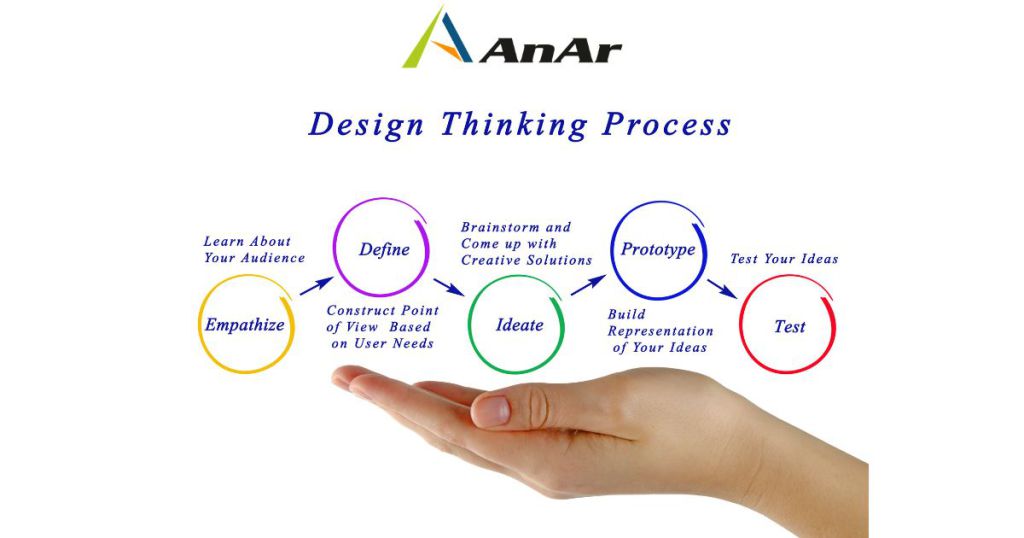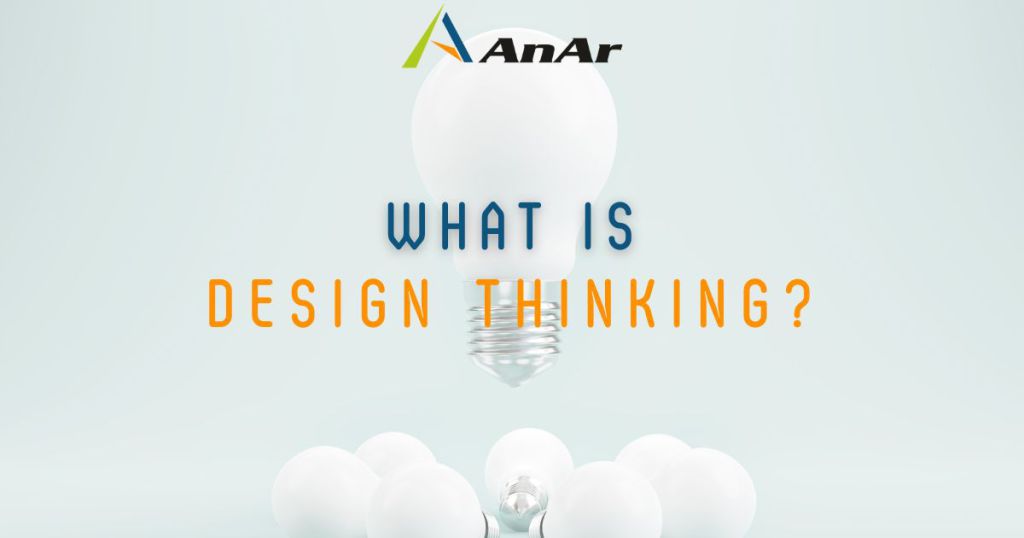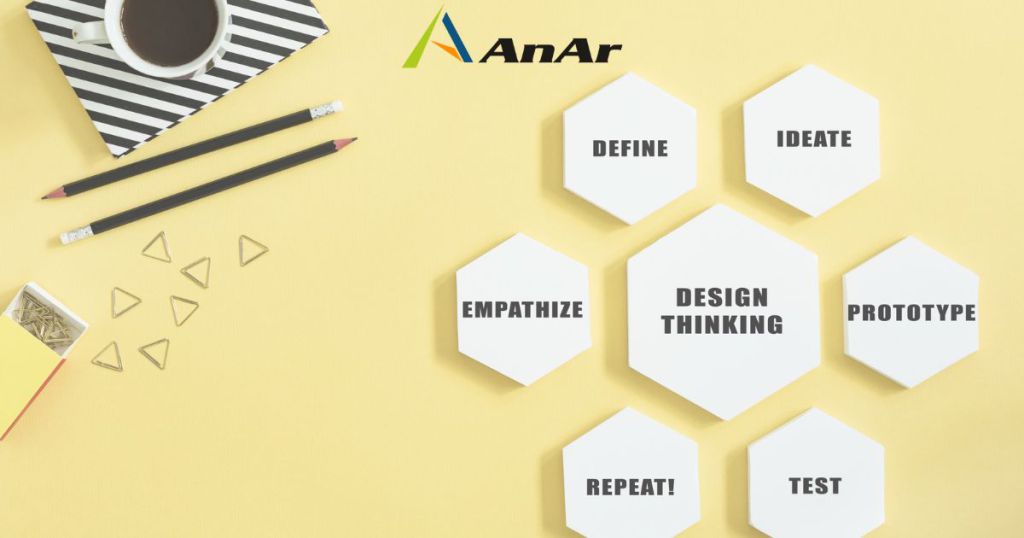You’ve probably heard the term “design thinking” in this day and age, where innovation is essential to corporate growth and success. It may have been suggested by a top leader as something that should be used more frequently, or you may have noticed it on the resume of a potential employee.
But design thinking is not just the domain of designers; all notable innovators in business, science, literature, music, art, and engineering have used it.
So, why everyone calls it (design) thinking?
Despite the fact that design thinking is an ideology founded on designers’ processes for outlining design stages, its goal is to give all professionals a standardized innovation process to come up with original solutions to challenges, whether or not they are related to design.
Design thinking is also unique because designers’ work methods may assist us in methodically extracting, teaching, learning, and applying these human-centered techniques to solve challenges creatively and inventively — in our designs, organizations, countries, and lives. The design thinking process is taught at prestigious colleges throughout the world, including Stanford and Harvard, and some of the world’s most well-known organizations, like Apple, Google, and Samsung, have quickly adopted the approach.
In this article, we’ll explore design thinking as a process, and in Essence, we’ll also discuss why it is essential and how to adopt it.
What is Design Thinking?
Design thinking is a way of thinking about problem-solving and innovation based on human-centered design concepts. While it can be dated back hundreds, if not centuries, it acquired traction in the current business world after Tim Brown, CEO, and president of design agency IDEO, published an article about it in the Harvard Business Review.
Because it is user-centric and solution-based rather than problem-based, design thinking differs from other innovation and ideation techniques. In other words, it concentrates on the solution to an issue rather than the problem itself.
For instance, if a team is having trouble adjusting to remote work, the design thinking process encourages them to think about ways to raise employee engagement instead of concentrating on the issue (decreasing productivity).
In terms of process — Design thinking is an iterative process that seeks to understand your users, challenge assumptions, redefine challenges, and generate unique ideas that can be prototyped and tested.
It is a five-phase iterative and non-linear process:
- Empathize
- Define
- Ideate
- Prototype
- Test
The final goal is to figure out alternative strategies and solutions that are not immediately apparent based on your initial understanding.
Design thinking is more than simply a process; it offers a variety of practical techniques to support the application of an entirely new way of thinking.
In essence, design thinking is human-centric and user-specific. It’s about the person at the heart of the problem and solution, and it necessitates asking questions like-
Who will make use of this product?
What effect will this solution have on the user?
Building empathy with users is the first and possibly most crucial stage in design thinking. Understanding the individual affected by a problem allows you to develop a more impactful solution.
Besides empathy, design thinking is oriented toward monitoring product interaction, generating conclusions based on research, and ensuring the user stays the emphasis of the final implementation.
Let’s understand the four significant phases of the design thinking process.
Design Thinking Phases
According to Harvard Business School, design thinking is a four-phase innovation framework. As the process loops, reverses, and repeats, the phases shift from tangible to abstract thinking and back again.
This delicate balance is necessary because thinking abstractly makes ideas more likely to be original. However, in order to guarantee that the solution is reliable and practical, ideas must be grounded in concrete thinking.
Below are the four steps to successful innovation and design thinking:
Clarify
The first stage of the design thinking process involves focusing it more narrowly. To create the best solution, the problem statement must be identified. This can be accomplished by making careful observations and taking the time to identify the issue and the obstacles that have previously prevented a solution.
To make specific users’ observations and gather facts from research, a variety of tools and frameworks are available — and are frequently required. The most important thing is to observe without bringing up assumptions, regardless of the tools used.
After compiling the results of your observations, the next step is to frame those results to create insights. You can start thinking abstractly by rethinking the problem as a statement or question.
Ideation
The next step is ideation, which occurs after the problem statement or question has been solidified (Here, solidified doesn’t mean finalized).
In this stage, you can utilize a tool like Systematic Inventive Thinking (SIT) to create an innovative process that can be replicated in the future. The ultimate goal is to transcend cognitive fixedness and devise new and innovative solutions to your recognized difficulties.
Continue aggressively avoiding assumptions and keeping the user in mind during ideation sessions.
Develop
The third stage entails creating concepts by critiquing various potential solutions. This encompasses several rounds of prototyping, testing, and experimenting to answer essential concerns regarding the viability of a proposal.
Keep in mind that the goal of this step is not perfection but rather to test out various concepts to determine what works and doesn’t.
Implement
Implementation, the fourth and final stage, is where the process comes together. Implementation begins with testing, followed by results analysis, iteration, and testing once more as a continuation of the development process.
It could be necessary to return to an earlier stage to iterate and improve until you find a workable solution. Given that design thinking is frequently a non-linear, iterative process, such a strategy is advised.
Don’t forget to reflect on the innovation management tactics used throughout the design thinking process during this phase and to communicate results with stakeholders. Learning from experience is a distinct innovation and design thinking activity.



Why is it necessary to adopt design thinking skills?
Design thinking’s key benefit is providing a straightforward approach to creativity. Trial and error are an excellent technique to experiment and evaluate what works and doesn’t, but it’s sometimes time-consuming, expensive, and ultimately ineffective. On the other hand, applying the specific design thinking phases is an effective strategy for creating fresh, original ideas.
Design thinking may significantly benefit your career, both in terms of progression and compensation and by providing a transparent, defined methodology that encourages strategic innovation.
The most typical jobs requiring design thinking abilities as of December 2021 were:
- Marketing managers
- Graphic designers
- Software developers
- General and operations managers
- Management analysts
- Architectural and engineering managers
- Computer and information systems managers
Businesses are often on the lookout for personnel with design thinking abilities. Companies will probably increase their requirement for workers with design thinking and innovation skills as they continue to realize their importance.
Why is design thinking adoption important for businesses?
Organizations can provide consumers with lasting value because of design thinking. Not only design systems but any complex system can benefit from the process since it:
Seeks to meet a specific human need
Teams can identify customer pain areas that they hadn’t previously considered and that the customer may not even be aware of by using an observational, human-centered approach. Once those problems are identified, design thinking can offer a solution.
Takes on problems that are vague or challenging to explain
Consumers usually do not know what problem they have that needs to be solved or cannot articulate it. However, with careful observation, one can discover difficulties based on what they see from actual consumer behavior rather than simply working off their preconceived notions of the consumer — this aids in defining ambiguous problems, making it easier to surface solutions.
Contributes to more creative solutions
Humans are incapable of envisioning things that are not thought to be possible, making it impossible for them to ask for things that do not yet exist. Design thinking can contribute to the discovery of previously unknown pain areas. Taking an iterative approach to solving those difficulties often results in non-obvious, creative solutions.
Enables organizations to run with agility and efficiently
Rather than spending a long time investigating a problem without coming up with a solution, design thinking emphasizes making prototypes and testing them to evaluate their effectiveness.
How to adopt a design-thinking mindset?
Designers have employed design thinking to produce products or services for decades, but the entire business sector has recently adopted the technique. Design thinking has substantially impacted everything from product design & development to CX (customer experience) & DX (digital transformation).
Tim Brown — chair and co-CEO of IDEO, has suggested the following techniques to make Design Thinking Part of the Innovation Drill — in his article in Harward Business Review.
- Begin at the beginning — Include design thinkers at the beginning of the innovation process before any direction is established. Design thinking will allow you to explore more ideas faster than you could otherwise.
- Take a human-centered approach — Along with business and technological factors, human behavior, needs, and preferences should be considered in innovation. Human-centered design thinking, particularly when combined with direct observational research, will yield surprising ideas and deliver innovation that reflects what customers want.
- Try early and often — Establish a culture of rapid testing and prototyping. In the first week of a project, encourage teams to produce a prototype. Progress can be measured using a statistic such as the average time to prototype or the number of consumers exposed to prototypes throughout a program.
- Seek outside help — Find opportunities to co-create with customers and users to expand the innovation ecosystem. Use Web 2.0 networks to boost your innovation team’s practical scale.
- Blend big and small projects — Manage an innovation portfolio that ranges from short-term incremental ideas to long-term revolutionary ones. Expect business units to drive and fund incremental innovation, but be willing to initiate revolutionary inventions from the top.
- Budget to the pace of innovation — Although design thinking happens swiftly, the path to market might be uncertain. Don’t limit your ability to innovate by relying on time-consuming budgeting cycles. As projects, progress and teams learn more about prospects, be prepared to change your funding strategy.
- Find talent any way you can — Look for candidates from integrative programs such as Stanford’s new Institute of Design and progressive business schools around the world. People with more traditional design backgrounds can push solutions well beyond what you expect. Non-designers with the correct characteristics may even be able to flourish in design-thinking professions.
- Design for the cycle — People in many businesses migrate every 12 to 18 months. However, design projects may take longer to complete from start to finish. Plan tasks so those design thinkers can progress from inspiration to ideation to implementation. Experiencing the entire cycle improves judgment and has significant long-term benefits for the organization.
Wrapping-up
Design thinking is a human-centered approach to innovation that draws from the designer’s toolkit to integrate the needs of people, the possibilities of technology, and the requirements for business success.
Design thinking can be a great asset to your business if you invest the time to implement it fully. We hope that you found this blog post to be helpful! If you would like more information on design thinking, please get in touch with us anytime. Thank you for reading; we are always excited when one of our posts can provide useful information on a topic like this!






